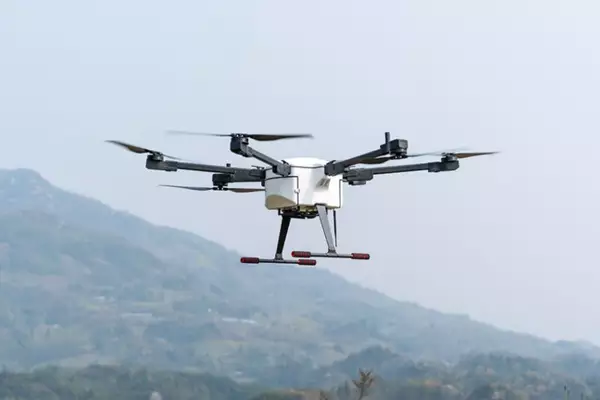A drone attack injured three people in the Imphal district of Manipur.
About Drone Technology:
- It refers to the utilization of Unmanned Aerial Vehicles (UAVs), commonly known as drones.
- These are pilotless flying machines that operate either autonomously or under remote control.
- They can carry payloads ranging from cameras to weapons, depending on the mission.
Components
- Unmanned Aircraft (UA): The main aerial vehicle.
- Ground Control System (GCS): Where operators control or monitor the drone.
- Control Link: The communication system that connects the drone to the GCS.
- Other Equipment: Includes batteries, sensors, and payload carriers.
Applications
- Agriculture: Crop monitoring, spraying, and pest control.
- Emergency Response: Search and rescue, firefighting.
- Infrastructure Inspection: Monitoring bridges, pipelines, and roofs.
- Surveillance: Law enforcement, wildlife monitoring, and anti-poaching.
- Defense: Surveillance, reconnaissance, and even combat missions.
- Disaster Management: Mapping zones, aiding in relief efforts.
- Entertainment and Media: Aerial photography and videography.
Issues:
- Security Threats: Drones can be used for terrorism, smuggling, or cyber-attacks.
- Privacy Concerns: Drones equipped with cameras can invade personal spaces.
- Misuse by Non-State Actors: They can be employed for illicit activities, including trafficking and espionage.
- Data Security: Drones often collect sensitive data, which can be intercepted.
Drones in Defense:
- Surveillance and Reconnaissance: Monitoring enemy movements and gathering intelligence.
- Combat Drones: Used in offensive operations and counter-terrorism.
- Search and Rescue: Locating missing persons in difficult terrain.
- Maritime Surveillance: Monitoring coastlines and identifying threats.
- India’s defense efforts include:
- Indrajaal: The first autonomous anti-drone dome system.
- Heron Drones: Procured from Israel for enhanced surveillance.
- MQ-9B Drones: Acquired from the US for combat missions.
Key Regulations:
- Drone Rules 2021: Classify airspace into Green, Yellow, and Red zones for drone flights.
- Aircraft (Security) Rules 2023: Establish safety protocols for drone usage.
- No-Permission-No-Takeoff (NPNT): Ensures drones can’t take off without prior approval.
- Drone Import Policy 2022: Bans foreign drones but allows the import of drone components.
Efforts to Promote Drones
| Efforts | Description |
| PLI Scheme for Drones | Financial incentives to manufacturers of drones and components. |
| Drone Shakti Scheme | Promotes drone use in various sectors. |
| Digital Sky Platform | A platform to manage drone traffic and permissions. |
Ref: Source
| UPSC IAS Preparation Resources | |
| Current Affairs Analysis | Topperspedia |
| GS Shots | Simply Explained |
| Daily Flash Cards | Daily Quiz |
Frequently Asked Question:
What is drone technology?
Drone technology refers to the use of unmanned aerial vehicles (UAVs) for a variety of purposes, including surveillance, defense, and agriculture.
How are drones used in agriculture?
Drones are used in agriculture for crop monitoring, spraying pesticides, and controlling pests efficiently.
What are the legal restrictions for drone usage?
Drone usage is regulated by laws like Drone Rules 2021, which classify airspace into zones and require permissions for certain areas.
What is the No-Permission-No-Takeoff (NPNT) rule?
The NPNT rule ensures that drones cannot take off without prior permission from regulatory authorities to ensure airspace safety.
What is the Drone Shakti Scheme?
Drone Shakti Scheme is an initiative by the Indian government to promote the use of drones across various industries, including agriculture and defense.



